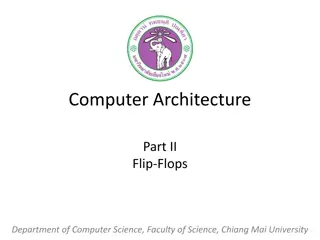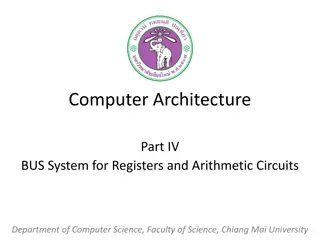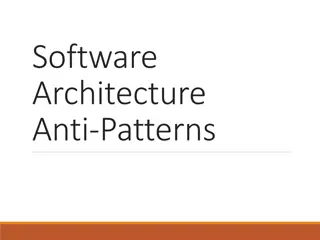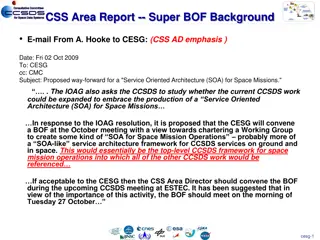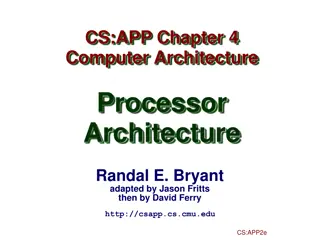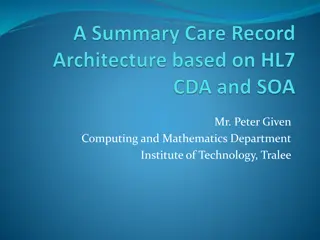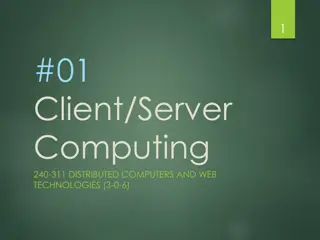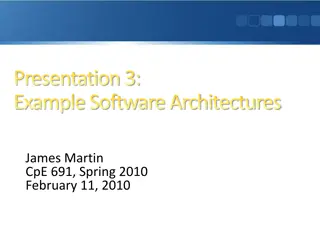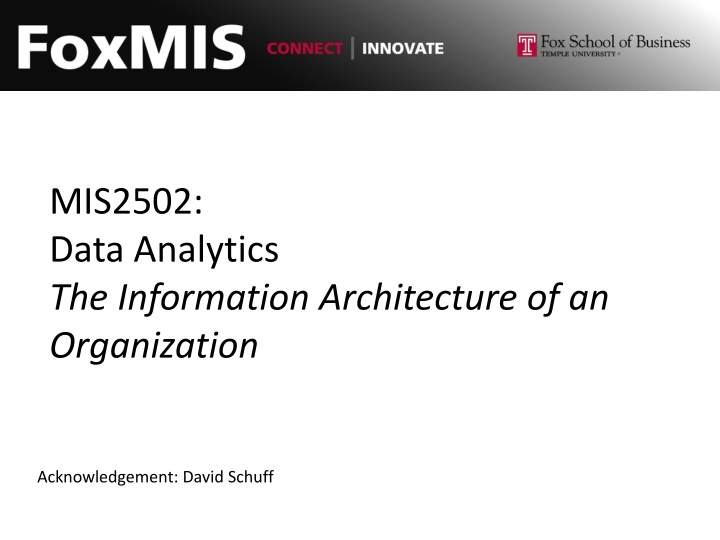
Data Storage and Management in Organizations
Explore the information architecture of organizations, focusing on data analytics, database management, and the relational paradigm. Discover how businesses store and manage data, including real-time and historical transactional data. Learn about transactional databases, relational databases in an online retail example, and more.
Uploaded on | 1 Views
Download Presentation

Please find below an Image/Link to download the presentation.
The content on the website is provided AS IS for your information and personal use only. It may not be sold, licensed, or shared on other websites without obtaining consent from the author. If you encounter any issues during the download, it is possible that the publisher has removed the file from their server.
You are allowed to download the files provided on this website for personal or commercial use, subject to the condition that they are used lawfully. All files are the property of their respective owners.
The content on the website is provided AS IS for your information and personal use only. It may not be sold, licensed, or shared on other websites without obtaining consent from the author.
E N D
Presentation Transcript
MIS2502: Data Analytics The Information Architecture of an Organization Acknowledgement: David Schuff
https://blogs.sas.com/content/sastraining/2016/11/28/forecastihttps://blogs.sas.com/content/sastraining/2016/11/28/forecasti ng-your-next-breakup/
The Information Architecture of an Organization Data entry Data Data analysis extraction Transactional Database Analytical Data Store Stores real-time transactional data Stores historical transactional and summary data Called OLTP: Called OLAP: Online transaction processing Online analytical processing
The Transactional Database Stores real-time, transactional data Examples of transactions Purchase a product Enroll in a course Hire an employee In business, a transaction is the exchange of information, goods, or services. For databases, a transaction is an action performed in a database management system. Data is in real-time Reflects current state How things are now transactional databases deal with both: they store information about business transactions using database transactions
An Example of the Transactional Database
The Relational Paradigm How transactional data is collected and stored Primary Goal: Minimize redundancy Reduce errors Less space required ? Which of these do you think is more important today Most database management systems are based on the relational paradigm
The Relational Database Online Retailer Example A series of tables with logical associations between them Product Review ProductID ReviewID Name ProductID Description StarRating The associations (relationships) allow the data to be combined Price Text Shipping ReviewerName SalesRank Likes
Why more than one table? Every review has an associated product Every product can have a review Products and reviews have a unique ID number Split the details off into separate tables Product Review ProductID ReviewID Name ProductID Description StarRating Price Text Shipping ReviewerName SalesRank Likes This is good because: Information is entered and stored once Minimizes redundancy
Analyzing transactional data Can be difficult to do from a relational database Relational databases are optimized for storage efficiency, not retrieval Having multiple tables is good for storage and data integrity, but bad for analysis Tables must be joined together before analysis can be done Analytical data stores are optimized for retrieval and analysis, not storage efficiency and data integrity The solution is the Analytical Data Store
The Analytical Data Store Stores historical and summarized data Historical means we keep everything Data is extracted from the transactional database and reformatted for the analytical data store Extract Transform Load Analytical Data Store Transactional Database Query Query Data conversion We ll discuss this in much more detail later in the course!!
The Dimensional Paradigm Data is stored like this around a business event and can be summarized like this for analysis Product Famous Amos Diet Coke M&Ms Doritos quantity & total price quantity & total price quantity & total price quantity & total price Ardmore, PA quantity & total price quantity & total price quantity & total price quantity & total price Temple Main Store quantity & total price quantity & total price quantity & total price quantity & total price Cherry Hill, NJ Mar. 2012 quantity & total price quantity & total price quantity & total price quantity & total price Feb. 2012 King of Prussia, PA Jan. 2012
Dimensional Data and the Data Cube or it can be expanded in detail like this so that data mining (complex statistical analysis) can be done. Sales ID Qty. Sold Total Price Prod. ID Prod. Name Prod. Price Prod. Weight Store ID Store Address Store City Store State Store Type Time ID Day Month Year 1000 1001 1002 Product Dimension Store Dimension Time Dimension Sales Fact
Comparing Transactional and Analytical Data Stores Transactional Database Analytical Data Store Based on Relational paradigm Based on Dimensional paradigm Storage of real-time transactional data Storage of historical transactional data Optimized for storage efficiency and data integrity Optimized for data retrieval and summarization Supports day-to-day operations Supports periodic and on- demand analysis
The agenda for the course Weeks 7 through 8 Weeks 1 through 6 Weeks 9 through 15 Data entry Data analysis Data extraction Transactional Database Analytical Data Store Stores real-time transactional data Stores historical transactional and summary data Data interpretation, visualization, communication




